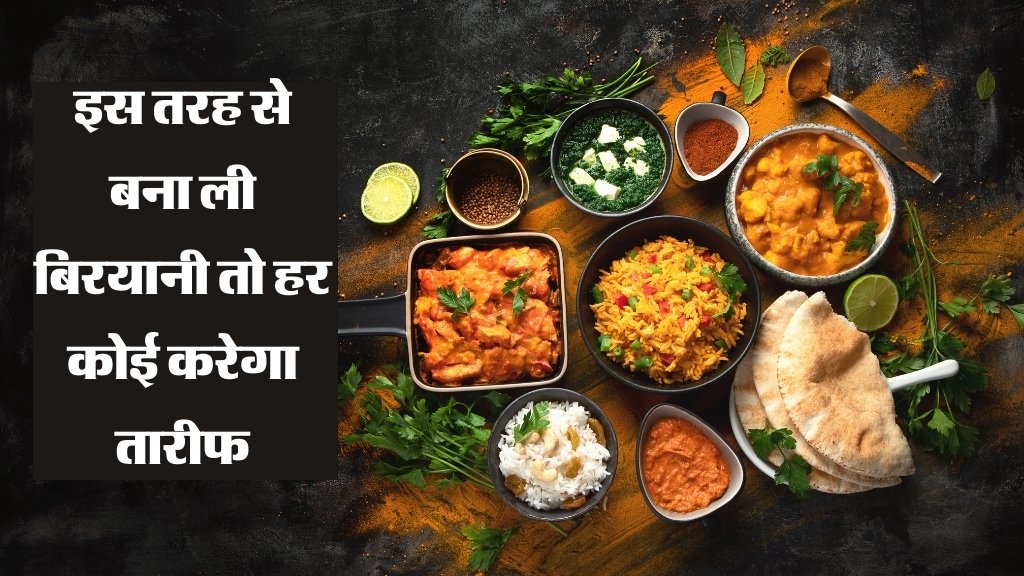Authentic Biryani, a fragrant and flavorful rice dish, is one of the most iconic and beloved dishes in India. Its rich history, incredible taste, and regional variations have made it a culinary masterpiece. From royal kitchens to street food vendors, biryani has become a symbol of celebration, bringing people together with its irresistible aroma and taste. Here, we explore the recipe, history, and regional varieties of biryani, as well as its popularity across different parts of India.
The Recipe for Authentic Biryani
Biryani is prepared using a combination of fragrant basmati rice, meat (or vegetables), spices, and other ingredients like yogurt and fried onions. Below is a step-by-step guide to preparing an authentic chicken biryani:
Ingredients:
- For Marination:
- 500g chicken (bone-in or boneless)
- 1 cup yogurt
- 1 tbsp ginger-garlic paste
- 1 tsp red chili powder
- ½ tsp turmeric powder
- 1 tsp garam masala
- Salt to taste
- For Rice:
- 2 cups basmati rice (soaked for 30 minutes)
- 4-5 cloves
- 2-3 cardamom pods
- 1 bay leaf
- 1 small cinnamon stick
- Salt to taste
- For Gravy:
- 2 medium onions (thinly sliced)
- 2 medium tomatoes (chopped)
- 2-3 green chilies (slit)
- 1 cup coriander and mint leaves (chopped)
- ½ cup cooking oil or ghee
- 1 tsp cumin seeds
- 1 tsp biryani masala
- For Layering:
- A pinch of saffron soaked in ¼ cup warm milk
- Fried onions for garnishing
- Ghee for drizzling
Instructions:
- Marinate the Chicken: Combine chicken with yogurt, ginger-garlic paste, spices, and salt. Marinate for at least 1 hour or overnight for best results.
- Cook the Rice: Boil water with whole spices (cloves, cardamom, bay leaf, cinnamon). Add soaked basmati rice and cook until 70% done. Drain and set aside.
- Prepare the Gravy: Heat oil or ghee in a pan, add sliced onions, and fry until golden brown. Add green chilies, tomatoes, and the marinated chicken. Cook until the chicken is tender and the gravy thickens.
- Layer the Biryani: In a large pot, spread a layer of rice, followed by a layer of chicken gravy. Sprinkle chopped mint and coriander leaves, fried onions, and a drizzle of saffron milk. Repeat the layers and finish with a top layer of rice.
- Dum Cooking: Seal the pot with a tight lid or dough and cook on low heat for 25-30 minutes to allow the flavors to meld.
- Serve: Gently fluff the biryani and serve hot with raita or a side salad.
A Brief History of Authentic Biryani
The origin of biryani is as fascinating as its taste. It is believed to have been introduced to India by the Mughals during their rule in the 15th and 16th centuries. The word “biryani” is derived from the Persian word “birian,” meaning “fried before cooking.” This reflects the Persian influence on the dish, which was originally cooked with rice, meat, and aromatic spices.
Biryani evolved over time, blending with local culinary practices in various regions of India. Each region added its unique twist to the dish, resulting in a multitude of varieties that are enjoyed today. Whether it’s the royal Hyderabadi Biryani, the flavorful Lucknowi Biryani, or the spicy Kolkata Biryani, each version tells a story of cultural exchange and local adaptation.
Regional Varieties of Authentic Biryani in India
India boasts numerous biryani varieties, each with its distinct ingredients and cooking techniques. Here’s a look at some popular regional biryanis:
- Hyderabadi Biryani (Telangana):
- Known for its spicy and rich flavors.
- Cooked in the “dum” style, using raw marinated meat layered with rice.
- Includes saffron, fried onions, and nuts for added richness.
- Lucknowi Biryani (Uttar Pradesh):
- Originating from Awadhi cuisine, this biryani is mildly spiced.
- Cooked using the “pukki” method, where the meat and rice are cooked separately and layered together.
- Kolkata Biryani (West Bengal):
- Introduced by the Nawabs of Awadh.
- Includes potatoes and eggs, alongside meat.
- Has a slightly sweet flavor due to the use of kewra and rose water.
- Malabar Biryani (Kerala):
- A coastal favorite, made with short-grain rice (kaima).
- Features coconut milk, cashews, and raisins, giving it a unique taste.
- Dindigul Biryani (Tamil Nadu):
- Famous for its tangy flavor, achieved by adding curd and lemon juice.
- Uses jeera samba rice instead of basmati rice.
- Ambur Biryani (Tamil Nadu):
- Known for its simplicity, using minimal spices and short-grain rice.
- Cooked with seeraga samba rice and served with brinjal curry.
Regional Demand for Authentic Biryani in India
Biryani enjoys immense popularity across India, with regional preferences influencing its preparation and ingredients.
- North India: Lucknowi and Delhi-style biryanis dominate, reflecting the Mughal influence.
- South India: Hyderabadi, Ambur, and Malabar biryanis are celebrated for their rich spices and distinct cooking methods.
- East India: Kolkata Authentic Biryani is preferred for its unique blend of mild spices and potatoes.
- West India: Sindhi biryani and Bombay biryani are popular choices, featuring bold flavors and a mix of dried fruits.
Conclusion
Authentic Biryani is more than just a dish; it’s a cultural phenomenon that unites people through its incredible flavors and rich heritage. From the kitchens of Mughal emperors to roadside eateries, biryani has evolved into a dish that caters to every palate. Whether you prefer the fiery Hyderabadi biryani or the subtle sweetness of Kolkata biryani, this dish continues to reign as a symbol of India’s diverse culinary traditions. Try the recipe at home or explore its regional variations to experience the magic of biryani!
